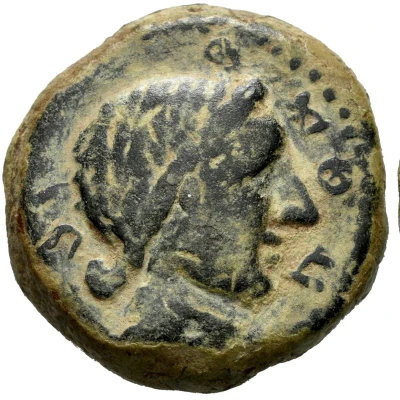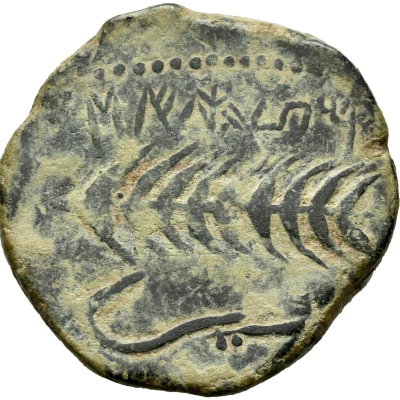


© Tauler & Fau Subastas
As 175 BC - 126 BC
| Bronze | 18.0 g | 27.5 mm |
| Issuer | Abra (Turdetani people) |
|---|---|
| Type | Standard circulation coin |
| Years | 175 BC - 126 BC |
| Value | 1 As |
| Currency | As (mid 2nd century BC) |
| Composition | Bronze |
| Weight | 18.0 g |
| Diameter | 27.5 mm |
| Shape | Round (irregular) |
| Technique | Hammered |
| Demonetized | Yes |
| Updated | 2024-10-10 |
| Numista | N#314496 |
|---|---|
| Rarity index | 97% |
Reverse
Wheat ear pointing right. Plow below.
Comment
Obverse inscription:"UEKuEKi" written from right to left in Southeastern (Meridional) Iberian script.
Reverse inscription:
"KIONIS" written from right to left in Southeastern (Meridional) Iberian script.
Three pieces known according to 2278 page 440.
Interesting fact
The Abra (Turdetani people) coin was part of a series of coins issued during the reign of the Roman Republic, specifically during the period known as the "Roman Republic, 175-126 BC." These coins were used as a means of payment and exchange, and they often featured images of gods, goddesses, and other symbols of the Roman world. The fact that this coin was made of bronze and weighed 18.0 g suggests that it was a relatively small and lightweight coin, which would have been easy to handle and transport. It's worth noting that the Turdetani people were a pre-Roman tribe that lived in the area that is now modern-day Spain, and their coins were influenced by the Roman culture and design. The Abra coin is an example of this blending of cultures and is a fascinating piece of history.